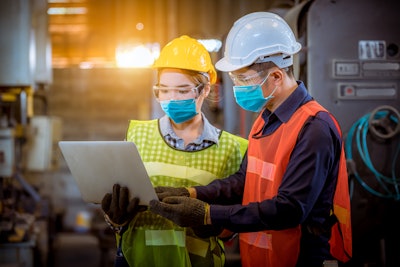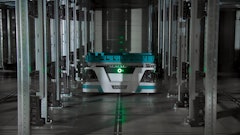
The global manufacturing landscape is in flux. As trade policies remain unpredictable, geopolitical risks rise, and consumers demand speed and sustainability, brands are rethinking how and where their supply chains operate. Many are moving production closer to home, seeking greater control, resilience, and agility.
Legacy systems built around offshore production and long lead times can’t keep pace with today’s expectations. To compete, manufacturers must modernize—not just with new tools, but with a new approach to talent.
At the heart of this transformation is workforce development. The next generation of manufacturing in the United States will be powered by advanced automation, robotics, and intelligent systems. And without investing in upskilling and technical training, even the most promising technology will fall short. If we’re serious about rebuilding American manufacturing, we must also rebuild the way we train and support the people who enable it to function.
Emerging technologies like robotics, digital bonding, and computer vision are enabling smarter, more responsive production. In sectors like soft goods and electronics, automation has driven faster delivery, reduced waste, and introduced new levers for sustainability—critical advantages in a climate-conscious economy. However, none of this matters without people. Technology doesn’t eliminate the need for a workforce; it redefines it.
A recent Deloitte study found that by 2030, over 2 million manufacturing jobs in the United States could go unfilled. Meanwhile, 65% of industry leaders say the pace of technological change is outpacing the ability of their workforce to keep up. We’re not just facing a skills gap—we’re facing a systems gap in how we prepare people for the jobs of tomorrow.
Factories are evolving into smart environments that rely on collaborative robotics, data-driven quality control, and advanced machine interfaces. These roles require a different kind of training—closer to technical operations, systems thinking, and even software fluency. Companies need to shift from fearing job loss to investing in job evolution, creating roles that are safer, more technical, and far more rewarding than the repetitive tasks of the past.
Manufacturers have a responsibility—and a business imperative—to prepare their teams for this shift. That means reassessing workforce planning to account for hybrid human-machine roles. It also means building partnerships with trade schools, aligning curriculum with automation and AI skillsets, and launching apprenticeship programs that make reskilling both accessible and aspirational.
We’re already seeing proof points. For example, some associations offer hands-on, industry-aligned training that connects traditional craft with cutting-edge technology. These kinds of programs don’t just fill skill gaps—they create clear, empowering career pathways for the next generation of manufacturing talent.
Current employees are also a powerful resource. Workers already on the factory floor bring deep product knowledge and operational intuition. With the right training, they’re uniquely positioned to thrive in an advanced manufacturing environment. In fact, 39% of employees say they would leave a job for one with better learning opportunities. Companies that invest in education and upskilling will lead in retention and innovation.
There’s precedent to follow. Industries like automotive and aerospace have successfully layered automation into legacy production systems while training their labor force on digital tools and intelligent systems. The apparel and soft goods sector has similar potential, but it will require leadership that sees education and technology as interconnected, not competing, investments.
To stay competitive, U.S. manufacturing must embrace both the physical and human sides of innovation. Reshoring is not just a supply chain strategy; it’s a chance to rebuild an industrial base that is more responsive, inclusive, and resilient. That future depends on a workforce that understands automation and AI not as a threat, but as tools to be mastered. With thoughtful implementation, automation can elevate the role of the worker and unlock new levels of productivity and precision.
In forward-looking factories, investing in people and technology in tandem has already begun to yield meaningful outcomes: smarter systems, higher-quality products, and more empowered teams.
The future of American manufacturing is not just about bringing production home. It’s about building a system where people and technology grow together. We have a rare opportunity to rebuild manufacturing in a way that’s more equitable, more resilient, and built for what’s next. That starts by investing in the people who will drive it forward.
Manufacturers must integrate workforce planning into technology roadmaps. They must build collaborative programs with vocational institutions and technical colleges. And they must give existing employees a path forward—one built not on displacement, but advancement.
Let’s not just re-shore. Let’s re-skill. Upskilling isn’t optional—it’s foundational to the future of U.S. manufacturing.















![Pros To Know 2026 [color]](https://img.sdcexec.com/mindful/acbm/workspaces/default/uploads/2025/08/prostoknow-2026-color.mduFvhpgMk.png?ar=16%3A9&auto=format%2Ccompress&bg=fff&fill-color=fff&fit=fill&h=135&q=70&w=240)



